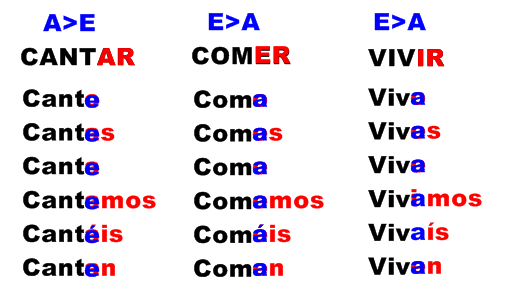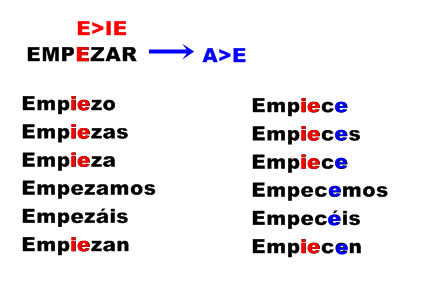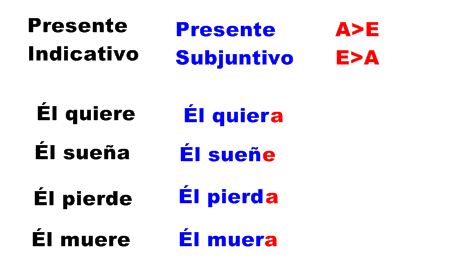We will continue talking about the Spanish Present Subjunctive and we also remind you that to review this complicated aspect of the Spanish language on your own, you can follow our series of videos about the Spanish Subjunctive.
Present Irregular Subjunctive (1)
In this lesson we will talk about the formation of the Present Subjunctive of a few irregular verbs: verbs with vowel changes in the present.
As your probably already remember and we have seen previously, to form the Regular Present Subjunctive the first thing we do is think about the conjugation of the Present Indicative. Afterwards, we apply the change to the vowels: a > e for –AR verbs and e>a for –ER and –IR verbs.
There is a type of verb that are irregulars in Present Indicative, where there are vowel changes. This is the case with empezar, where the e>ie (for example: yo empiezo) or with poder, where the o>ue (example: yo puedo).
To form the Present Subjunctive of these verbs, we are going to think of the Present Indicative and keep the vowel changes. We only have to apply the vowel changes a > e for –AR verbs and e>a for the –ER /–IR verbs.
Look at the following images about how to form the Present Subjunctive of verbs with vowel irregularities in the present
You can say that these verbs are Irregular in Present Subjunctive, but aren’t very different from their form in Present Indicative (except for the vowel change that is also used to form the Regular Present Subjunctive.)
Examples:
Yo espero que él quiera venir a mi fiesta – I hope he wants to come to my party
Quiero que Nadia sueñe con su novio – I want Nadia to dream about her boyfriend
No creen que él pierda su vuelo – They don’t think he will miss his flight
Deseo que mi perro no muera nunca – I don’t want my dog to die ever
There are other types of irregular verbs in the Present Subjunctive which we will talk about in the following videos of the series about the Spanish Subjunctive. If you want to review the of this post, you can do it with the following video:




